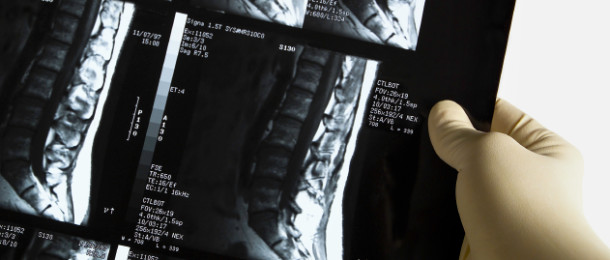Overcoming Scoliosis

Although the upper spinal column has a degree of roundness and the lower portion of the spine appears to sway when viewed from the side, it should be a straight vertical line when observed from the rear. Scoliosis is a lateral, or sideways, curvature of your spine. The condition most often occurs during a growth spurt just before the onset of puberty. Although the cause of many cases of scoliosis is unknown, it can be the result of medical conditions like cerebral palsy and muscular dystrophy as well as physical trauma. The medical condition also tends to run in families. Girls have a higher risk of developing the condition.
What is Scoliosis?
Most cases are mild, but the disorder can worsen over time. Severe scoliosis can be debilitating. A severe curvature of the spine can reduce the amount of space within the chest cavity. As a result, the lungs may not function properly. The curvature may also cause balance problems due to uneven hips or uneven leg lengths. As the condition progresses, the spine may rotate or twist resulting in a protruding rib or shoulder blade.
Treatment Options
A doctor should closely monitor the individual to determine whether the curvature is worsening. While mild cases do not require treatment, complex curvatures of the spine may require physical therapy, chiropractic care or a brace. Particularly severe cases may require surgery. Adults with the disorder may experience chronic back pain. Physical therapy techniques have been developed to offset the side effects of scoliosis and help you to breathe better. Therapy can also improve the shape and appearance of your body chiropractic care may be effective in treating acute short-term pain.
In severe cases, wearing a brace is the recommended course of treatment to prevent further curvature of the spine. Contoured to conform to the patient’s body, the device fits underneath the arms and around the hips, lower back and rib cage. The close-fitting brace is worn underneath the clothing and typically does not interfere with daily activities. The brace should be worn day and night because the number of hours that it is worn increases its effectiveness. Children can remove the brace to participate in sports if required. Wearing the brace is discontinued after the spinal column stops growing.
While bracing can halt the progression of the curvature, it may only provide temporary correction of the condition. The scoliosis may assume its original magnitude or worsen when the brace is removed. If the curvature exceeds 45 degrees, the Scoliosis Research Society generally recommends surgery as the prescribed course of treatment. If the curve is allowed to exceed 70 degrees, the disorder distorts the individual’s normal posture.
Spinal fusion is the most common type of surgery. During the procedure, surgeons will connect two or more vertebrae together with pieces of bone or bone-like material. Metal rods, wires and screws are used to hold the spinal column in place until the vertebrae fuse together. In children, an adjustable rod is used. The rod will be lengthened every few months based on how fast the child is growing.
If you or your child are experiencing back pain or any of the other symptoms of scoliosis, you should schedule an appointment with a medical professional. Early diagnosis and treatment increases the chance of a more positive outcome.
If you are reading this on any other blog than Comprehensive Pain Management Center or via my RSS Feed, it is stolen content without credit. You can find us on Twitter via @CompPainMgmt. Come and visit our blog at http://www.compainmc.com/blog/.

